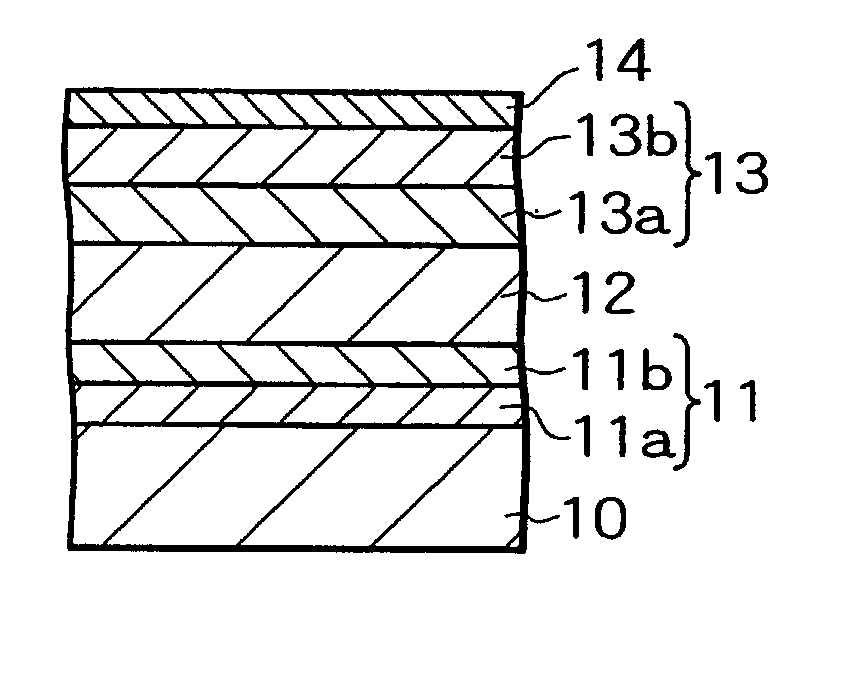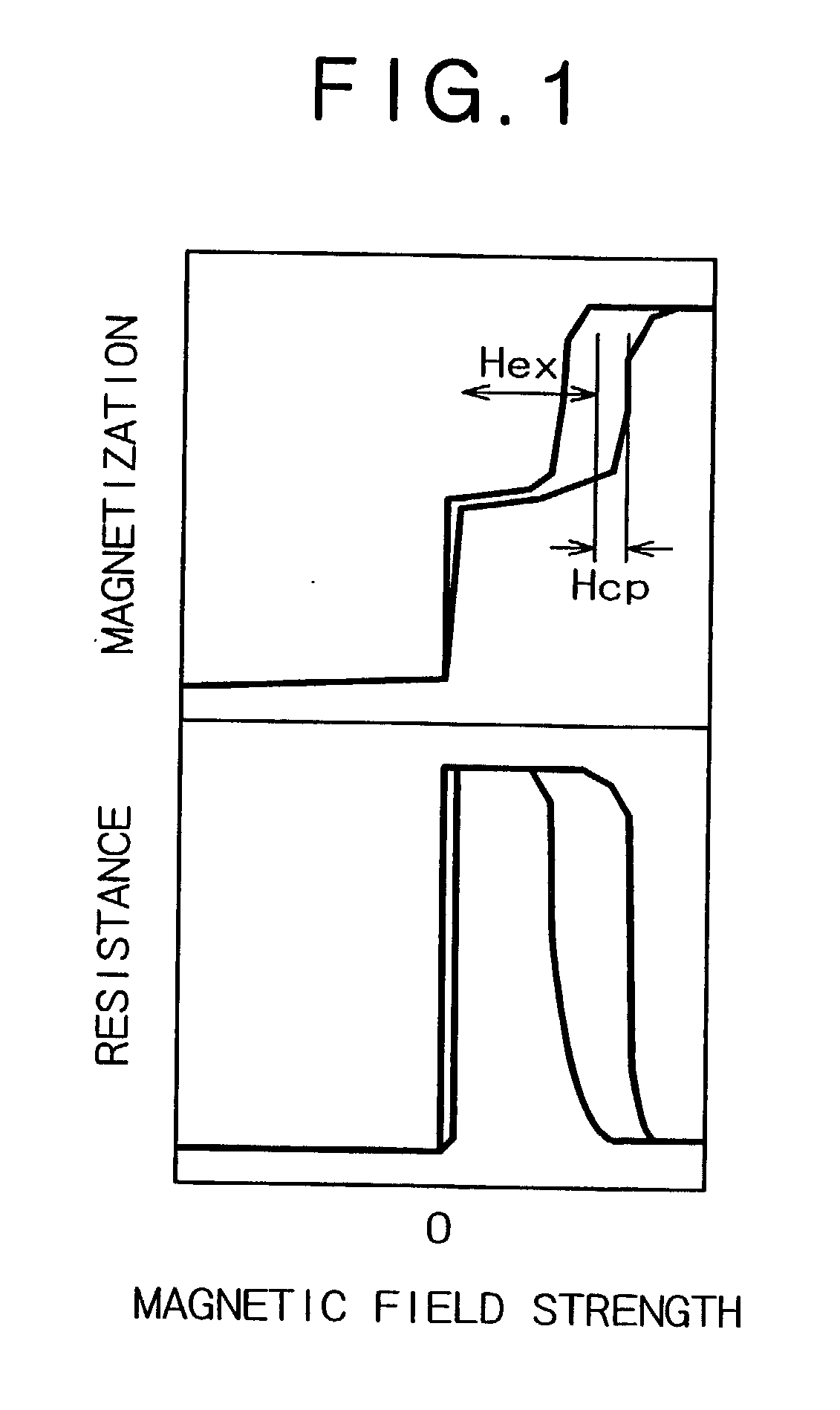Exchange coupling film, magneto-resistance effect device, magnetic head, and magnetic random access memory
a technology of exchange coupling and magnetoresistance, which is applied in the direction of nanoinformatics, magnetic bodies, instruments, etc., can solve the problems of insufficient separation of free layer and pinning layer hysteresis, inability to realize good device operation, and insufficient coercive force of pinning layer
- Summary
- Abstract
- Description
- Claims
- Application Information
AI Technical Summary
Problems solved by technology
Method used
Image
Examples
second experiment
[0102] (Second Experiment)
[0103] A second experiment will be described. The exchange coupling film of the second experiment is the exchange coupling film having the Top-AF type of configuration shown in FIG. 3. The exchange coupling film having the double-layered pinning layer whose pinning layer 13 includes the exchange coupling giving layer 13a and the exchange coupling enhancement layer 13b of the invention was produced as the experiment, the exchange coupling film having the conventional single-layered pinning layer was also produced for comparison. Concretely, a Ta layer (1.5 nm) as the foundation layer 11a, a NiFe layer (2.0 nm) as the foundation layer 11b, the single or double-layered antiferromagnetic layer shown below as the pinning layer 13, an IrMn layer (10 nm) as the antiferromagnetic layer 12, and a Ta layer (3.0 nm) as the cap protection layer 14 were formed on the silicon substrate 10 whose surface was thermal-oxidized in the order. The pinning layers 13 were prepare...
third experiment
[0105] (Third Experiment)
[0106] A third experiment will be explained. It is a purpose of the third experiment to study an effect which a combination of the exchange coupling giving layer and the exchange coupling enhancement layer affects the exchange coupling. The exchange coupling film of the third experiment is the Bottom-AF type of exchange coupling film shown in FIG. 2. A Ta layer (5 nm) as the foundation layer 11a, a Cu layer (3 nm) as the foundation layer 11b, an IrMn layer (10 nm) as the antiferromagnetic layer 12, a ferromagnetic layer of combinations shown below as the exchange coupling giving layer 13a and the exchange coupling enhancement layer 13b, and a Ta layer (5 nm) as the cap protection layer 14 were formed on the silicon substrate 10 whose surface was thermal-oxidized in the order to produce the exchange coupling film of the double layered pinning layer. The combination of exchange coupling giving layer 13a / exchange coupling enhancement layer 13b were prepared as ...
fourth experiment
[0110] (Fourth Experiment)
[0111] As described above, in order to increase the exchange coupling in the double-layered pinning layer, it was found that the combination of the exchange coupling giving layer and the exchange coupling enhancement layer is important and NiFe is not preferable to the exchange coupling giving layer and the exchange coupling enhancement layer. In the fourth experiment, a combination in which the large exchange coupling can be obtained by a CoFe alloy was studied.
[0112] The exchange coupling film of the fourth experiment is the exchange coupling film having the Bottom-AF type of configuration shown in FIG. 2. A Ta layer (5 nm) as the foundation layer 11a, a Cu layer (3 nm) as the foundation layer 11b, an IrMn layer (10 nm) as the antiferromagnetic layer 12, a ferromagnetic layer of combinations shown below as the exchange coupling giving layer 13a and the exchange coupling enhancement layer 13b, and a Ta layer (5 nm) as the cap protection layer 14 were forme...
PUM
 Login to View More
Login to View More Abstract
Description
Claims
Application Information
 Login to View More
Login to View More - R&D
- Intellectual Property
- Life Sciences
- Materials
- Tech Scout
- Unparalleled Data Quality
- Higher Quality Content
- 60% Fewer Hallucinations
Browse by: Latest US Patents, China's latest patents, Technical Efficacy Thesaurus, Application Domain, Technology Topic, Popular Technical Reports.
© 2025 PatSnap. All rights reserved.Legal|Privacy policy|Modern Slavery Act Transparency Statement|Sitemap|About US| Contact US: help@patsnap.com



